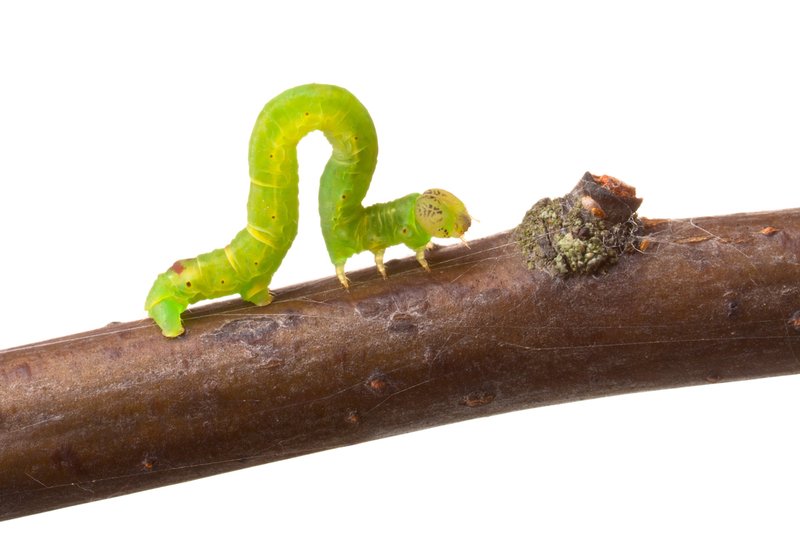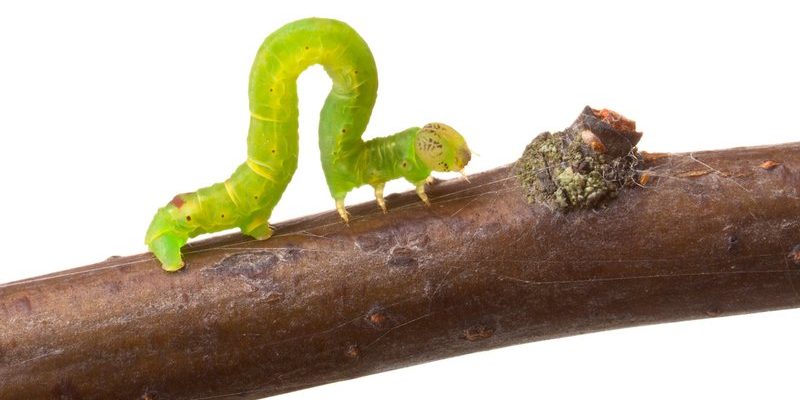
Inchworms, which are actually the larvae of moths, tend to hang out in certain habitats that provide the right kind of food and shelter. You might be wondering what makes one tree species more attractive than another. Is it the taste of the leaves, the tree’s height, or something else entirely? Let’s dive into the fascinating world of inchworms and their favorite trees.
What Are Inchworms?
Inchworms are the larvae of various moth species, primarily from the Geometridae family. They get their name from the way they move—by curling their bodies and stretching them out, they create a characteristic inching motion. Typically, these little guys are green or brown, helping them blend in with their surroundings, which is crucial for avoiding predators.
These larvae can be found in many environments, from forests to gardens. Their diet mainly consists of the leaves from various trees and shrubs. Inchworms play an important role in the ecosystem by helping to break down plant material and serving as a food source for birds and other wildlife. The question is, which trees do they prefer?
Preferred Tree Species
Inchworms are most attracted to certain trees, often choosing species based on the availability of their preferred food sources. Some of their favorites include:
- Maple Trees: Known for their sweet sap, maple leaves are a popular choice.
- Oak Trees: With their sturdy leaves, oaks provide a stable diet.
- Birch Trees: These trees have light, flexible leaves that inchworms find easy to munch on.
Each tree species has its unique characteristics that either attract or repel inchworms. For example, the texture and taste of the leaves play a significant role. Here’s the thing: if a tree is tough or has a strong taste, an inchworm might just move on to the next snack option.
What Makes Certain Trees So Attractive?
You might be wondering what specific traits make these trees desirable for inchworms. One major factor is the **leaf chemistry** of the tree species. Trees that have high nitrogen content in their leaves or lower levels of secondary compounds (which can taste bitter or be toxic) are often preferred. Inchworms are looking for a meal that’s not just filling but also delicious!
Additionally, the **tree structure** matters. Trees that offer plenty of leaves at the right height make it easier for inchworms to access their food without too much effort. For example, young, healthy trees often have a dense canopy that provides both food and shelter. This makes them a prime spot for inchworms to thrive.
Seasonal Changes and Inchworm Attraction
The season can dramatically influence which trees inchworms are drawn to. In early spring, when leaves are tender and new, inchworms are most active. They’re commonly seen munching on fresh foliage, which is easier to digest and packed with nutrients.
As the season progresses, the availability of food changes. If a tree loses its leaves, inchworms may look for other options, leading them to seek out different species. This seasonal shift is crucial for their survival, as they need to find food that nourishes them and supports their growth into adult moths.
How Inchworms Impact Tree Health
While inchworms might seem harmless, their presence can significantly affect the health of the trees they inhabit. Large populations of inchworms can lead to substantial leaf damage, which can stress the tree and make it more susceptible to diseases and pests. You might notice trees with lots of branches stripped bare, particularly in areas where inchworms are abundant.
However, it’s a double-edged sword. A certain level of insect activity can actually benefit the ecosystem by cycling nutrients and promoting biodiversity. Inchworms can help prune trees, allowing for more sunlight to reach lower branches and encouraging growth.
Managing Inchworm Populations
If you have inchworms munching on your trees and you’re worried about the damage, there are ways to manage their populations. **Natural predators**, like birds and beneficial insects, are your best allies. Encouraging these animals in your garden can help keep inchworm numbers in check.
If the infestation is serious, you might consider **hiring a pest control professional**, especially if you’re unsure about how to proceed. It’s important to use methods that are safe for the surrounding environment while effectively managing the inchworm population and protecting your trees.
Why Understanding Inchworm Preferences Matters
Grasping why inchworms are attracted to certain trees goes beyond mere curiosity. It’s about understanding the balance of our ecosystems. By knowing which trees are ideal habitats for these creatures, we can better appreciate our environment and its complex interconnections.
For gardeners, foresters, and nature enthusiasts, this knowledge can guide decisions on planting and managing trees. It might even influence how we think about conservation efforts, as certain trees hold more ecological value than others, especially for supporting insect populations like inchworms.
In summary, understanding inchworm preferences can help us foster healthier ecosystems and make smarter choices in our landscape designs.
As you explore your local woods or garden, keep an eye out for inchworms and the trees they love. It’s a small part of nature’s big puzzle, full of intricate connections and relationships waiting to be discovered.

